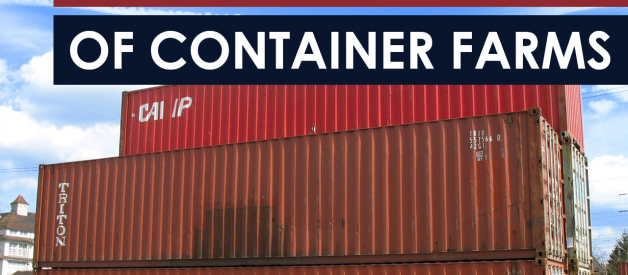It?s time to have an honest conversation about container farming.

There?s almost nothing that rouses more cheering here at the Bright Agrotech office than seeing new farmers make their first sale.
We love seeing photos of our farmers slinging salad at a farmers? market or selfies with their cilantro.
At the end of the day, those moments are what power us to keep doing what we do. We love it. We revel in it.
And when it doesn?t work out, we mourn just as strongly as we cheered.
When a farmer decides to quit, or when they overestimate their market, or when their equipment fails ? we feel that. It?s disheartening to see someone with so much passion give up their dream.
Over the last five years, we?ve seen a lot of new growers start farms of all kinds only to shut them down a few months or a few years later. Not only is this disappointing for the farmer, but it hampers the industry through the loss of valuable farms that were helping increase access to food.
An unfortunate trend we?ve seen recently is that too many of these losses are happening in one type of farming in particular: shipping container farms.
The common killer of container farms (or any modern farm that leverages technology) is unrealistic expectations about what the tech will do for them, how much their farms can produce, and what kind of labor is required to make it all work.
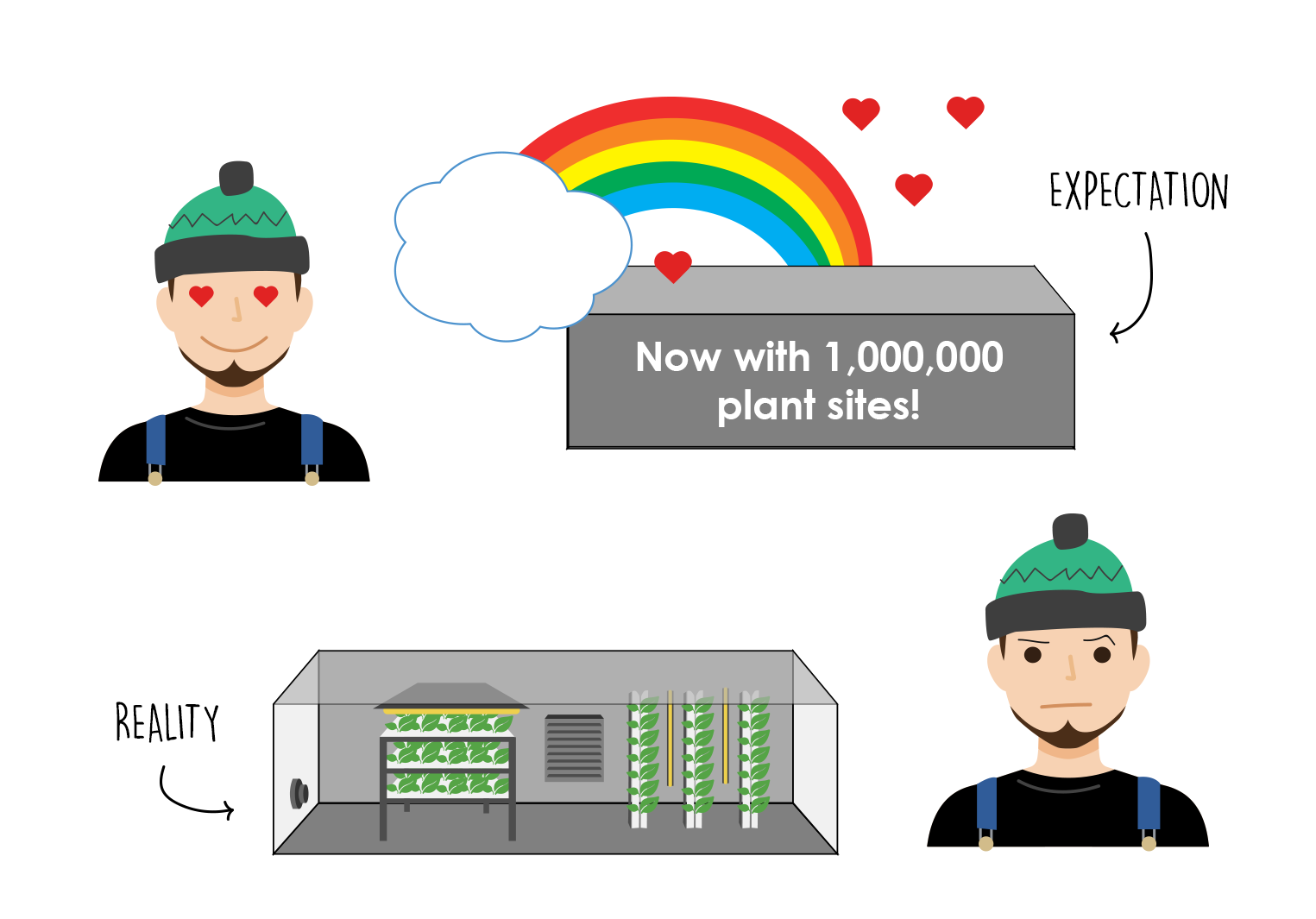 Don?t forget, even technologically advanced farming is still farming!
Don?t forget, even technologically advanced farming is still farming!
Leveraging the modularity of containerized farms can be a very powerful way to bring better food to local communities all around the world. There?s some serious potential here and it?s exciting stuff!
However, like any new venture, modern farmers need to know what goes into being successful and what challenges they need to prepare for in the process.
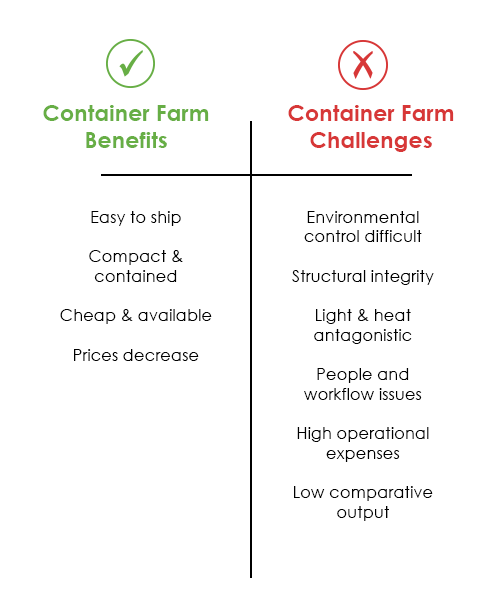
To help create realistic expectations, we need to talk honestly about the potential benefits and drawbacks of shipping container farms.
In this article, we?re going to cover the main pros and cons of the (used) container form factor.
By speaking honestly about the good, the bad, and the ugly of container farms, we can help more aspiring farmers start businesses that positively impact their communities, now and in the future.
See more videos like this on our YouTube Channel: https://www.youtube.com/c/BrightAgrotech
The good: What are the benefits of shipping container farms?
As of this writing, there are several hundred container farms parked in cities and backyards, parking lots and warehouses around the world.
They?ve been featured on TV, in newspapers, and by the internet?s top bloggers. Without a doubt, this type of farming has captured the interest of millions of people enchanted by the transformation of discarded containers into futuristic farms.
But does this farming form factor makes sense for farmers ? those starting businesses growing and selling food?
The biggest ?pros? of repurposed container farms are:
- They?re modular and easy to ship.
- They?re compact and self-contained.
- Used containers are cheap and available.
- Prices will continue to be driven down as competition increases.
Let?s dig into more details on the good side of shipping container farms.
Container farms are easy to transport
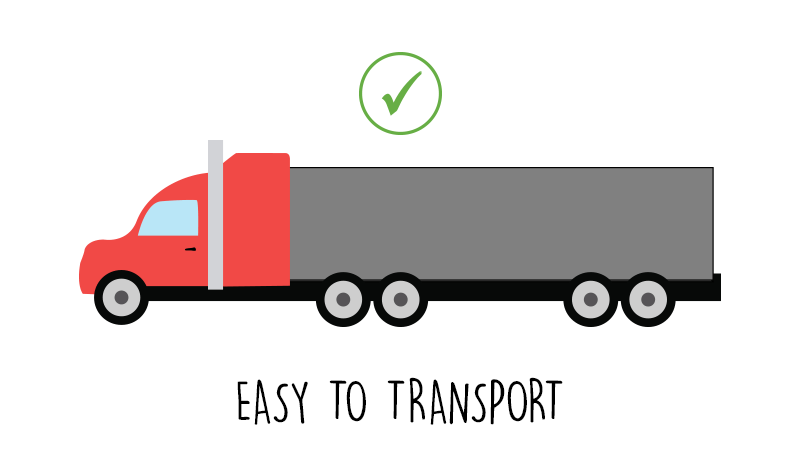
Farms built from used shipping containers are ? as the name implies ? easy to ship. Ideal, in fact.
The primary benefit of easy shipping is that manufacturers can set up shop where it?s cheap, then ship them directly to the farm site fully loaded and ready to grow.
There?s some serious potential there for setting up your farm quickly and starting to grow without having to worry about building a greenhouse or finding warehouse space.
Most of the benefit, however, stays with the manufacturer.
After all, why would a farmer who is establishing a farm to serve a local market need to move their farm that often? You could technically hire a crew with a crane to put in on a semi and move it across town if you felt so inclined, but why would you want to do that?
While the container farm is technically easier to move due to its form factor, we don?t advise planning a farm to be moved often.
Container farmers have a compact footprint
One benefit of growing in a container farm is that you don?t need a lot of land or a dedicated building to start.
That means modern farmers or program directors can now drop one of these behind a restaurant or in a school parking lot. In the end, the compact form opens up a lot of doors for producing food closer to where it?s consumed.
Keep in mind, however, that most container farms require a perfectly level platform to function (drainage lines need to flow in the right direction after all) and can require a cement pad.
Being able to park a farm anywhere you need food is an amazing achievement and therefore a big benefit of this form factor.
Containers are readily available
Used shipping containers are everywhere. Shipping companies have been using them for decades to ship all sorts of goods overseas, so millions of them are made.

When containers like refrigeration shipping containers break, they are often easier (and less expensive) to ?retire? than to fix.
This still represents a loss for the shipping company, however, so they?re usually eager to sell whatever retired containers they can. Altogether, this makes used containers very inexpensive.
The good part for farmers is that these types of containers are cheap and available! That means for a few thousand bucks you can get the shell of your new farm to build out.
Future container farmers gain through value-based competition
Because the cost of acquiring used shipping containers is very low, there are more and more value-added companies getting into the space. The more companies there are, the more the price will decrease over time.
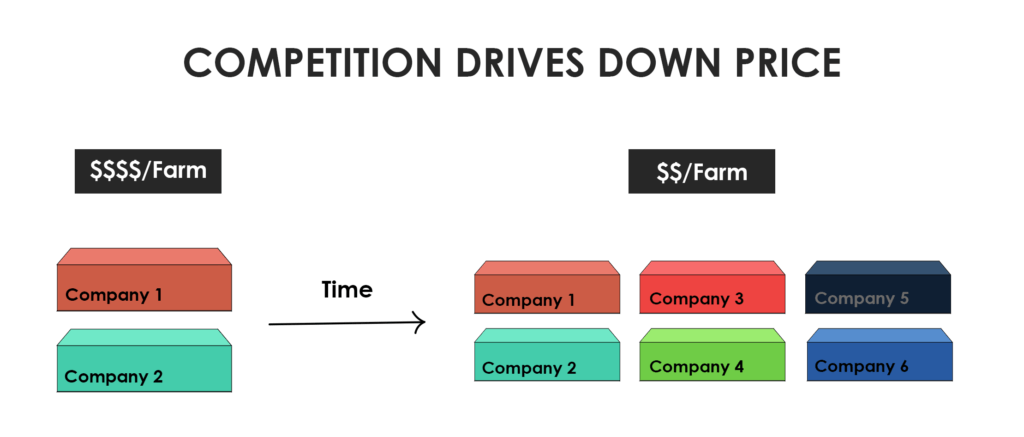
Obviously, a lower price point helps more aspiring farmers launch new businesses which will help to increase the supply of locally grown food around the world, which is good for everyone.
That said, investing your life savings into an inexpensive container farm may be a poor decision if you haven?t examined all the variables.
(Read on for more about the potential drawbacks of growing in a container.)
These four exciting benefits have never combined so well as in container farming. They represent an exciting area of development and accessibility to farming for people that were limited before.
The bad: What are the drawbacks of shipping container farms?
But while there are a lot of benefits to growing in a container, there are just as many drawbacks that aspiring modern farmers need to be aware of before applying for a loan or risking their 401k.

The core problem behind every drawback below is that shipping containers were not designed to grow food. And this puts growers at a disadvantage.
Because the intended purpose is absent in the fundamental design, everything required to outfit a container is a compromise.
The biggest potential drawbacks of container farms are:
- Environmental controls or lack thereof
- Structural integrity
- Antagonism between light, layout, and heat
- People and workflow issues (ergonomics)
- Misbalanced operational expense
- Low comparative output
Controlling the growing environment can be difficult in repurposed shipping containers
If managed well, there are many benefits to a controlled environment (year-round growing, more control over pests, etc.).
However, if environmental control is difficult in the facility, the same benefits become curses; conditions get out of control, humidity and heat accumulate, and pests thrive.
At any given time in an indoor farm?
- lights are generating heat.
- water is evaporating.
- plants are transpiring.
- gasses are accumulating and being exchanged.
- crop populations are fluctuating.
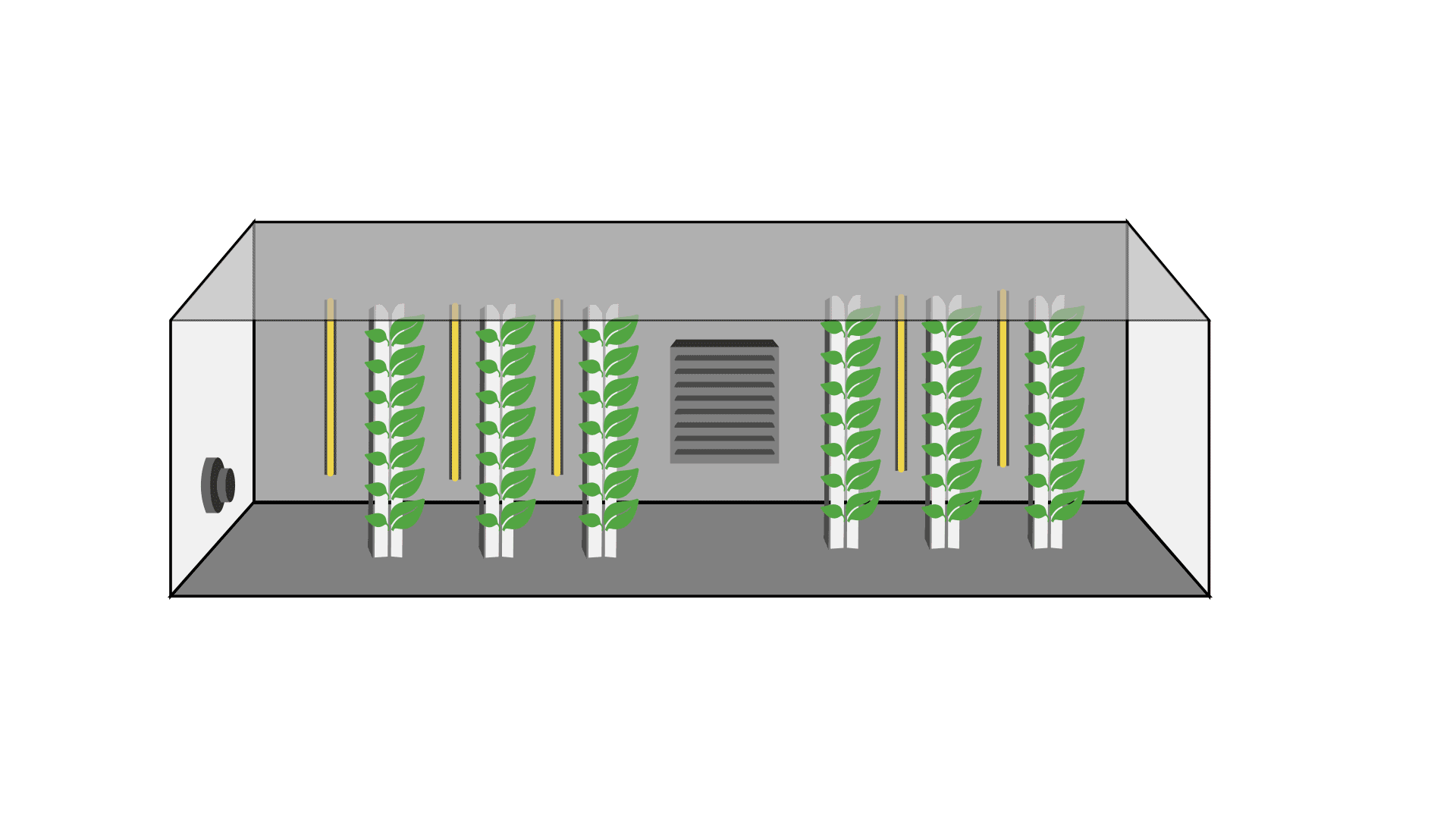
All the heat, humidity, and pests that result from these processes are amplified in a denser growing environment.
To make sure that controlled environment ag remains a blessing instead of a curse, environmental control must be understood and prioritized in the design of the farm.
But many container farms underestimate the complexity of controlling a growing environment consistently enough to produce a healthy crop reliably.
We?ve helped support dozens of farmers growing in repurposed containers who struggle with low productivity caused by poor environmental controls.
One farmer in particular has two containers less than a year old but have yet to reach even close to full production potential, or at least what was promised, because of humidity issues.
Insufficient lighting (constrained by heat as you?ll see below) and high humidity have resulted in low growth rates and rotting issues that are hard to compensate in the cramped space.
He?s in a very tough situation and we hate seeing this happen. Even though he?s added three new dehumidification devices, he still struggles to lower his humidity. As a result, his farm is vulnerable to disease like root rot which in a more purposefully-designed farm wouldn?t have been a problem.
That?s why it?s crucial that container farms purposefully provide adequate airflow, temperature controls, dehumidification, CO2, etc. to their units.
That?s a challenge for most repurposed shipping container farms simply because of the extreme constraints the structure provides.
Repurposed shipping containers can have structural integrity issues
An often overlooked danger of repurposed containers is the limits of their structural lifespan.
Remember, these things have been around the world a few times and battered by corrosive salt water, high winds, and many a forklift operator.
That means they were worn out well before they were made into farms.
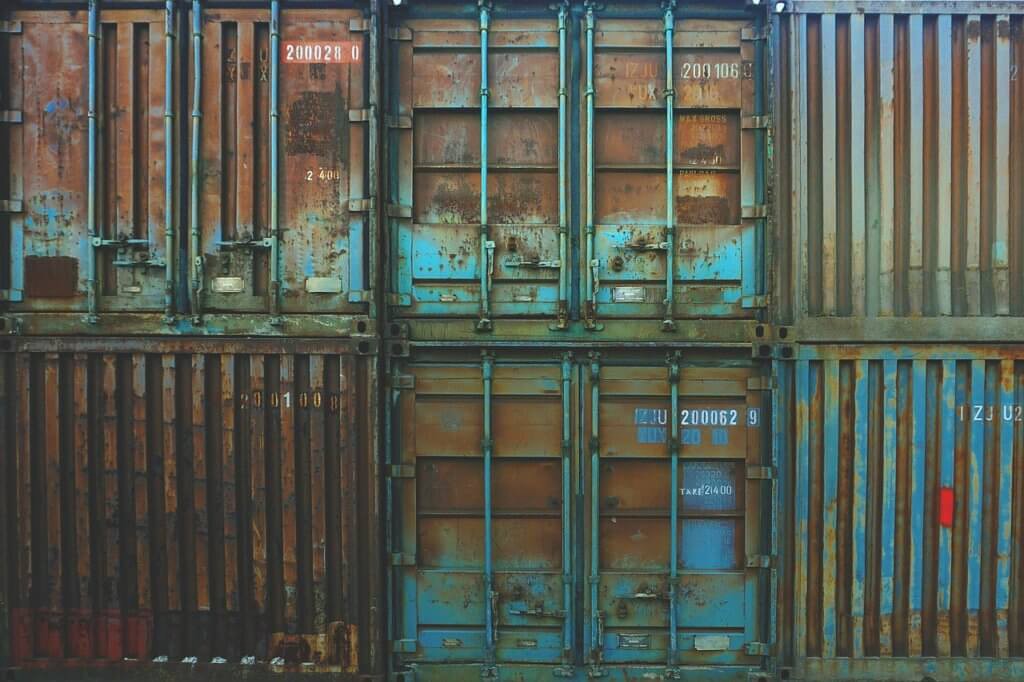
This limits the life of the farm significantly. In extreme cases, the quality of the container can be so low that we?ve known farmers whose farms were condemned by the city ? an enormous and painful blow when you?ve spent tens of thousands to start a farm.
If you go this route, please be sure you carefully inspect the structural integrity of your container! This industry will not move forward if passionate, local farmers like yourself are investing in farms that fail to function in a year or two.
Light, heat, and layout must be balanced appropriately in any indoor farm
The relationship between light and heat is a largely antagonist one.
Because light and heat are ?coupled?, supplying the quality (i.e. intensity of light) needed for plants to grow to their full potential also increases the amount of heat in the growing environment.
Simply put: when light goes up, heat goes up with it. The problem is that plants like light, but they don?t like heat.
As we saw in the previous section on the importance of environmental controls, this delicate balance between light and heat is amplified in dense environments.
Because of their tight spacing, container farms face an interesting conundrum when it comes to this messy triangle. They need high-intensity lighting to grow their crops but don?t often have the space required to install adequate HVAC units to deal with the heat created by these lights.

The result? Many container farms sacrifice productivity by being forced to use less than adequate LED lights to avoid adversely affecting their plants with heat and humidity.
Thankfully, there are some container farms out there mitigating this antagonistic relationship with intent-informed design.
By building a container that?s intentionally designed and equipped to grow plants, companies like Modular Farms in Canada and several Chinese and Japanese container farm companies can manage their growing environments effectively (among other things like moving around and inspecting plants easily).
When doing your due diligence on any future indoor farming equipment, be sure to carefully inspect how the system deals with the antagonistic relationship between light and heat. If you provide the plants the proper light intensity, you?re going to be producing heat and this heat can throw your system into a tailspin if not managed effectively. Make sure you have a way to deal with it!
Remember, if you want to produce high quality crops consistently, you need high quality light. You are replacing the sun after all.
Ignoring human workflows is never a good idea
Farm environments aren?t just designed for plants. They also need to be designed for people. The problem with shipping containers is that they?re not designed for people and that poses some real issues for farmers.
There are two reasons to keep your farm labor-friendly: the first is that labor is money, and the second is that there?s nothing worse than working in a cramped, confined space for dozens of hours each week. It can be enough to drive you insane, or at the very least make you dread coming to work.
Ergonomics ? or how efficiently your workplace is set up for workers ? is also important, yet this isn?t something you really think about when shopping around for a farm. Our advice? Don?t neglect it!
With those two goals in mind, container farmers must ask and answer important questions about how people will interact with the container farm.
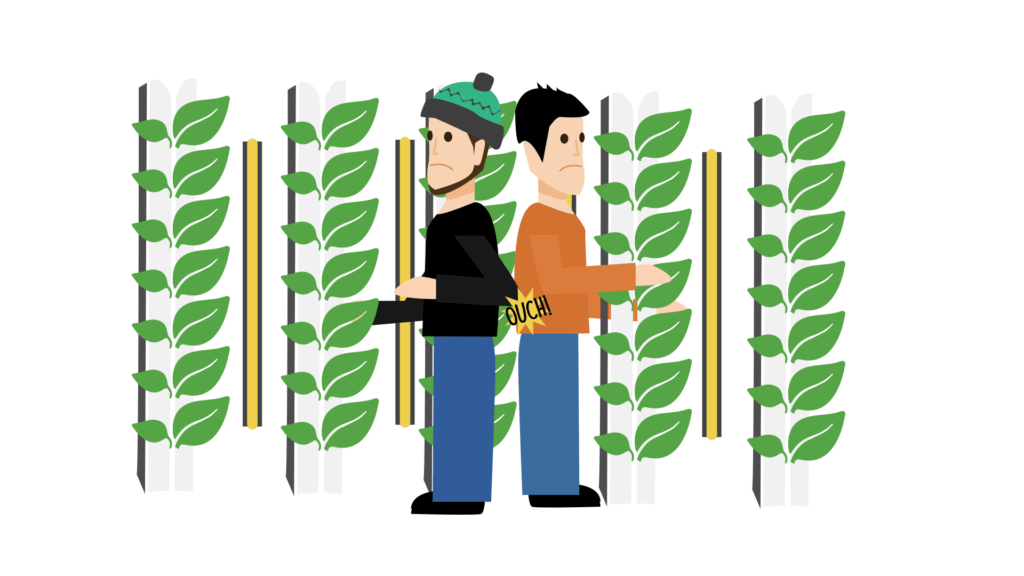
?Can I see all my crops easily??
?Could I work in here happily for several hours each day??
?Can more than one person work comfortably in this farm??
These are all questions to answer before making such a large investment.
The most practical way to feel out the workflow in your future farm is to visit a variety of container farms before buying one and see how they feel.
Talk to other farmers who?ve been farming for a while and get their feedback. You won?t regret it!
OPEX and CAPEX should be appropriately balanced
When it comes to starting a business, ignoring your market research or failing to fully understand your financial projections is just rolling the dice.
If you want to stay in business, you have to know you can earn a profit. (That?s why it?s critical every aspiring farmer conducts a feasibility study to assess the financial potential of your farm!)
And a major part of this research phase is understanding the right balance of capital expense and operating expense. Unfortunately, this is also where many new farmers can fall prey to being a little too frugal.
With roots in farming ourselves, we know the temptation to do things on the cheap. There?s something so seductive about scrapping a farm together with inexpensive components. But we also know that skimping on your initial investment may actually come back to bite you when it comes to the cost of running the farm.
Just remember that most of the time when you pay less upfront (CAPEX), you end up having higher costs as you run the business (OPEX). Pay more upfront, and the investment will keep operating costs lower in the future. Again, this isn?t always the case, but 9 times out of 10 it holds true.
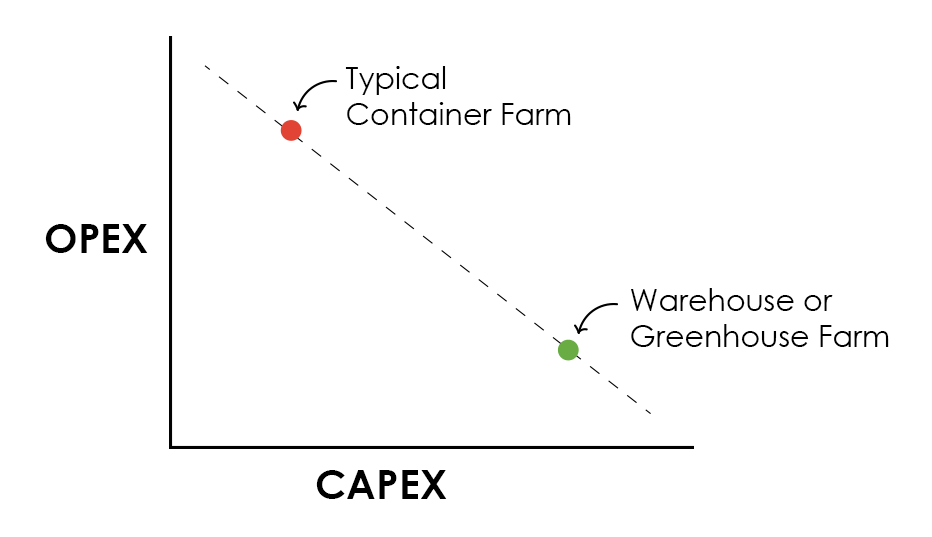
The same goes for container farms, or any indoor farming equipment for that matter.
Container farms can be less expensive to set up than many other farms like greenhouse or warehouse operations, but the constraints of the container can drastically increase the cost of running your farm. Especially when you have to add or replace equipment that fails, and your labor costs go up because of the increased time spent performing daily tasks like inspections and harvesting.
Don?t forget you?re starting a commercial farm here, not a backyard garden, and your goal is to grow and sell good food.
If you?re starting a system that hinders productivity (both for plants and workers) and requires upgrades or expensive maintenance to operate, you?re actually hurting your ability to accomplish your goals.
At the end of the day, cheap is not actually that cheap.
Beware vanity metrics
Farmers almost always make money by selling pounds (or ounces) of produce. Rarely do they sell a number of plants rather than a weight.
That?s why it?s so dangerous to measure a system?s economic potential with metrics like ?plant sites.? You may be able to grow an incredible number of plants per square foot, but if they?re small and unsalable then it?s a metric that at best is useless, and at worst is intentionally misleading. An example of this could be a microgreen tray with ?1000 plant sites in 1.5 square feet!?
This means that biomass is the only truthful and non-subjective metric.
Remember, vertical farming is not about how much production you can possibly cram into a space. It?s about growing better food closer to market and maximizing your production as a function of the resources you invest, such as capital, light, water, energy, and labor.
The best way to measure the productive and economic potential of your future farm is to compare the capital expense divided by the pounds of produce. That will not only give you an idea of how much your system will yield, but will also allow you to conduct appropriate market research based on weight, not plant sites.
Again, while it?s possible some chefs or farmers? market customers may buy a head of lettuce, the majority of your markets will want to know your price per pound or your price per ounce.
Like the simplified example used in the video above, imagine that one farm offers 2,000 lb/year of greens and costs $90k in capital expenses (i.e the price you pay for the farm, delivery, installation, and any modifications needed for it to perform when you plug it all in).
Another offers 4,000 lb/year of greens but costs $135k. The second option might take a little longer to pay off, but will be more profitable in the long run. (This is overly simplified so please do a feasibility study to get specific numbers!)

Remember, vertical farming is not about how much production you can possibly cram into a space. It?s about growing better food closer to market and maximizing your production as a function of the resources you invest, such as capital, light, water, energy, and labor.
The bottom line: Container farms can play a significant role in the future of our food system.
The world is begging for better food.
People have lost faith in labels and they?re sick of low quality food they see at the grocery store. They?re demanding fresher food, but can only get it if they have local farmers near them to supply it.
Container farms can play a significant role in solving this supply problem by helping more local farmers get started growing food much closer to market.
But not all container farms are created equal.
Repurposed containers, while a prize of pop culture, require too much compromise to be truly productive modern farming machines in the long run.
We have much more faith in custom built containers that practice intent-informed design and take a ground-up approach to environmental controls, labor workflows, and much more. They?re just much more efficient and effective at helping farmers accomplish their goals.
So while container farms have the potential to fundamentally change the game when it comes to growing better food closer to the markets that want it, these farms must survive to be impactful.
Why did we write this?
Our goal with this piece, like most of the articles we write, is to move the industry forward. Everything we do here at Bright is about helping the local farmer succeed and it pains us to see the opposite happen.
We believe that by being honest about the benefits and challenges, more farmers will start sustainable businesses and help supply the increasing demand for better food.
Do you have experience growing in a container? Do you have questions for those who do?
Please leave your questions and comments below.
Note: Repurposed shipping containers and containers designed specifically for growing crops are fundamentally different. In most cases, the latter have mitigated the majority of these issues in the design phase.
